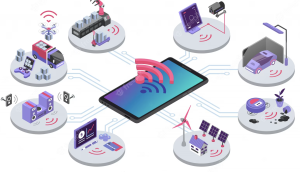|
|
A Survey on Ransomware: Evolution, Taxonomy, and Defense SolutionsHarun Oz, Ahmet Aris, Albert Levi, and A. Selcuk Uluagac, “A Survey on Ransomware: Evolution, Taxonomy, and Defense Solutions,” in ACM Computing Surveys, January 2022, [pdf] [bibtex] In recent years, ransomware has been one of the most notorious malware targeting end-users, governments, and business organizations. In this survey, we present a comprehensive survey on ransomware and ransomware defense research with respect to PCs/workstations, mobile devices, and IoT/CPS platforms. Click here to learn more about ransomware. |
 |
A Survey on Homomorphic Encryption Schemes: Theory and ImplementationA. Acar, H. Aksu, A. S. Uluagac, and M. Conti, “A survey on homomorphic encryption schemes: Theory and implementation,” ACM Comput. Surv., vol. 51, no. 4, pp. 79:1–79:35, Jul. 2018. [pdf] [bibtex] Homomorphic Encryption (HE), a special kind of encryption scheme, can address these concerns as it allows any third party to operate on the encrypted data without decrypting it in advance. In this survey, we intended to give a clear knowledge and foundation to researchers and practitioners interested in knowing, applying, and extending state-of-the-art Homomorphic encryption systems. Click here to learn more about homomorphic encryption schemes. |
 |
SoK: Cryptojacking MalwareE Tekiner, A Acar, AS Uluagac, E Kirda, AA Selcuk, “SoK: Cryptojacking Malware”, 2021 IEEE European Symposium on Security and Privacy (EuroS&P), 120-139, [pdf] [bibtex]. With the rise of emerging blockchain technologies, Cryptojacking malware has become an indispensable tool for attackers. In this paper, we present a systematic overview of cryptojacking malware based on the information obtained from the combination of academic research papers, Click here to learn more about cryptojacking malware |
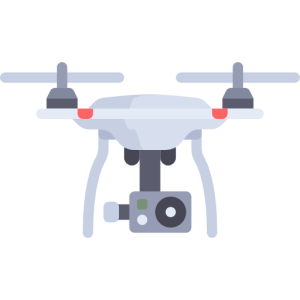 |
A Survey on Security and Privacy Issues of UAVsYassine Mekdad, Ahmet Aris, Leonardo Babun, Abdeslam El Fergougui, Mauro Conti, Riccardo Lazzeretti, and A. Selcuk Uluagac, “A Survey on Security and Privacy Issues of UAVs,” in Elsevier Computer Networks Journal, February 2023, [pdf] [bibtex] Nowadays, security and privacy issues of UAVs have become a highly urgent matter of national security. In this survey, we extensively survey the security and privacy issues of UAVs by providing a systematic classification at four levels: Hardware-level, Software-level, Communication-level, and Sensor-level. Click here to learn more about drone security. |
 |
A Survey on Security and Privacy Issues in Modern Healthcare Systems: Attacks and DefensesAKM Iqtidar Newaz, A. K. Sikder, A. S. Uluagac, “A Survey on Security and Privacy Issues in Modern Healthcare Systems: Attacks and Defenses,” in ACM Transactions on Computing for Healthcare Journal, 2021. [pdf] [bibtex]. Recent advancements in computing systems and wireless communications have made healthcare systems more efficient than before. In this survey, we explore various security and privacy threats to healthcare systems and discuss the consequences of these threats. Click here to learn more about healthcare security. |

|
A Survey of Honeypots and Honeynets for Internet of Things, Industrial Internet of Things, and Cyber-Physical SystemsJavier Franco, Ahmet Aris, Berk Canberk, and A. Selcuk Uluagac, “Survey of Honeypots and Honeynets for Internet of Things, Industrial Internet of Things, and Cyber-Physical Systems,” in IEEE Communications Surveys & Tutorials Journal, 2021 [pdf] [bibtex] The Internet of Things (IoT), the Industrial Internet of Things (IIoT), and Cyber-Physical Systems (CPS) have become essential for our daily lives. In this survey, we provide a survey of the research that has been carried out on honeypots and honeynets for IoT, IIoT, and CPS. Click here to learn more about honeypot security. |
 |
A Survey on Sensor-Based Threats and Attacks to Smart Devices and ApplicationsAmit Kumar Sikder, Guiseppe Petraca, H. Aksu, Trent Jaeger, and A. Selcuk Uluagac, “A Survey on Sensor-based Threats and Attacks to Smart Devices and Applications,” IEEE Communications Surveys & Tutorials Journal, 2021. [pdf] [bibtex] Modern electronic devices have become “smart” as well as omnipresent in our day-to-day lives. In this survey, we explore various threats and attacks abusing sensors of smart devices for malicious purposes. Click here to learn more about sensor-based threats and attacks to smart devices and applications. |
A Survey on IoT Platforms: Communication, Security and Privacy PerspectivesLeonardo Babun, Kyle Denney, Z. Berkay Celik, Patrick McDaniel, A. Selcuk Uluagac, “A survey on IoT platforms: Communication, security, and privacy perspectives” Computer Networks, Volume 192, 2021 [pdf] [bibtex]. The Internet of Things (IoT) redefines the way how commodity and industrial tasks are performed every day. In this survey, we conduct an in-depth analysis of popular IoT platforms from different application domains. Click here to learn more about IoT security. |
|
 |
A Survey on Function and System Call Hooking ApproachesJuan Lopez, Leonardo Babun, H. Aksu, and A. Selcuk Uluagac, “A Survey on Function and System Call Hooking Approaches,” Springer Journal of Hardware and Systems Security, Volume 1, Issue 2, pp 114-136, June 2017 [pdf] [bibtex]. Function and system call hooking approaches to allow for subroutine instrumentation, making hooking a valuable and versatile skill across industry and academia. In this survey, we present several criteria for the classification and selection of hooking tools and techniques as well as an examination of the major hooking approaches used on Windows, Linux, macOS, iOS, and Android operating systems. Click here to learn more about system call hooking approaches. |
 |
In-Depth Survey of Digital Advertising TechnologiesG. Chen, J. H. Cox, A. S. Uluagac, and J. A. Copeland, “In-depth survey of digital advertising technologies,” IEEE Communications Surveys Tutorials, vol. 18, no. 3, pp. 2124–2148, 3rd quarter 2016, IF: 20.230 [pdf] [bibtex]. Some of the world’s most well-known IT companies are in fact advertising companies deriving their primary revenues through digital advertising. In this survey, we primarily focus on online ads and in-app ads displayed on mobile devices. Click here to learn more about digital advertising technologies. |
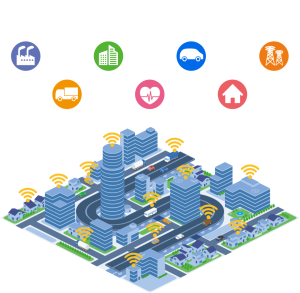 |
A Survey on Smart Grid Cyber-Physical System TestbedsM. H. Cintuglu, O. A. Mohammed, K. Akkaya, and A. S. Uluagac, “A survey on smart grid cyber-physical system testbeds,” IEEE Communications Surveys Tutorials, vol. 19, no. 1, pp. 446–464, 1st quarter 2017. [pdf] [bibtex] An increasing interest is emerging on the development of smart grid cyber-physical system testbeds. In this survey, we present a comprehensive survey on cyber-physical smart grid testbeds aiming to provide a taxonomy and insightful guidelines for the development as well as to identify the key features and design decisions while developing future smart grid testbeds. Click here to learn more about smart grid cyber-physical system tested. |
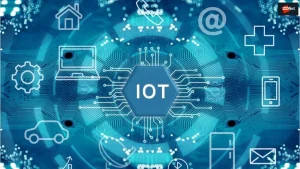
|
Survey on Enterprise Internet-of-Things Systems: A Security PerspectiveLuis Puche, Ahmet Aris, Leonardo Babun, K. Akkaya, A. Selcuk Uluagac, “Survey on Enterprise Internet-of-Things Systems (E-IoT): A Security Perspective,” in Elsevier Ad Hoc Networks Journal, 2021. [pdf] [bibtex] As technology becomes more widely available, millions of users worldwide have installed some form of smart device in their homes or workplaces. in this survey, we systematically analyze the security of E-IoT systems. Click here to learn more about state-of-the-art E-IoT security. |
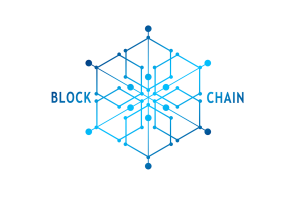 |
A Literature Review on Blockchain-Enabled Security and Operation of Cyber-Physical SystemsAlvi Ataur Khalil, Javier Franco, Imtiaz Parvez, A. Selcuk Uluagac, Shahriar Hossain and Mohammad Rahman, “A Literature Review on Blockchain-enabled Security and Operation of Cyber-Physical Systems,” in IEEE Signature Conference on Computers, Software, and Applications (COMPSAC), STPSA 2022: Security, Trust, and Privacy for Software Applications Workshop, 2022 [pdf], [bibtex]. Blockchain has become a key technology in a plethora of application domains owing to its decentralized public nature. In this paper, we present a comprehensive overview of contemporary advancement in using blockchain for enhancing different CPS operations as well as improving CPS security. Click here to learn more about blockchain-enabled security and the operation of cyber-physical systems. |
 |
A Review of Moving Target Defense Mechanisms for Internet of Things ApplicationsSaputro, N., Tonyali, S., Aydeger, A., Akkaya, K., Rahman, M.A. and Uluagac, S. (2020). A Review of Moving Target Defense Mechanisms for Internet of Things Applications. In Modeling and Design of Secure Internet of Things (eds C.A. Kamhoua, L.L. Njilla, A. Kott and S. Shetty) [pdf], [bibtex]. Moving Target Defense (MTD) techniques have been promising in many of the traditional network domains. In this paper, we present a review of the proactive MTD paradigm and investigate the feasibility and potential of specific MTD approaches for resource‐constrained Internet of Things (IoT) applications. Click here to learn more about moving target defense mechanisms for Internet of Things applications.
|


